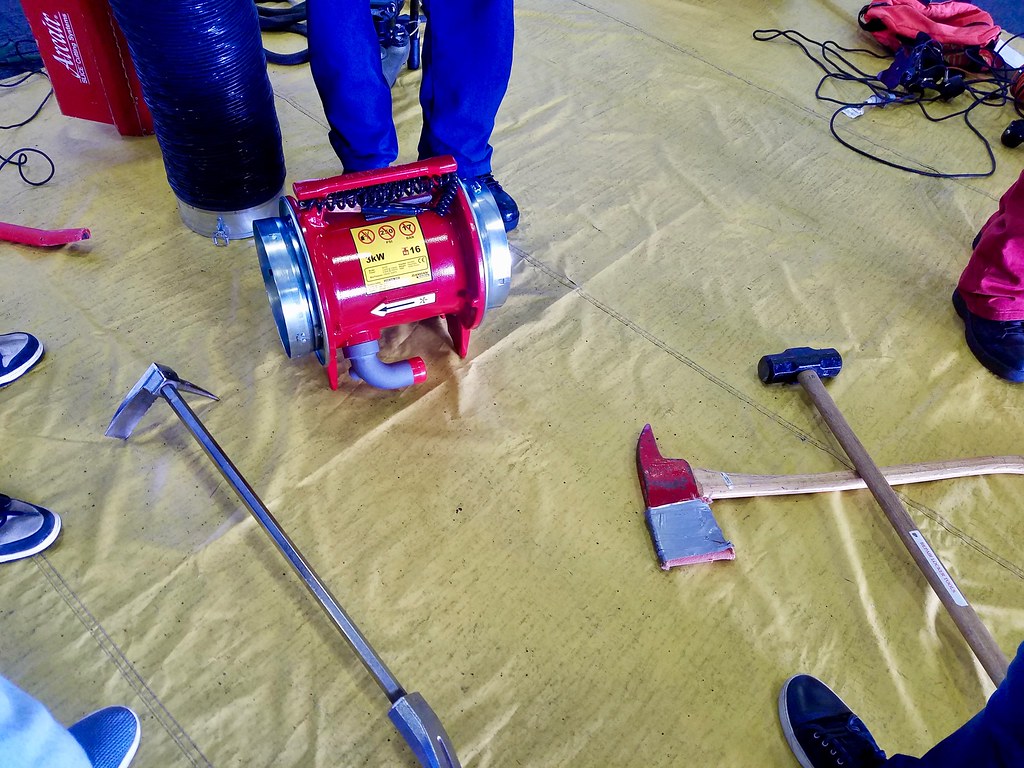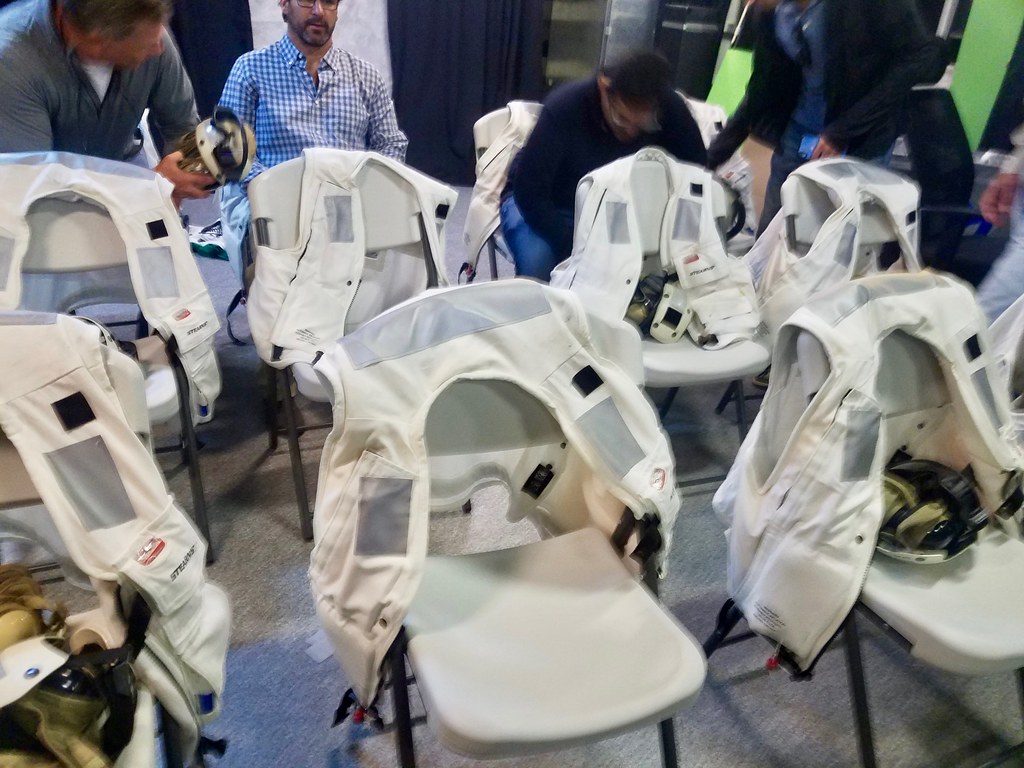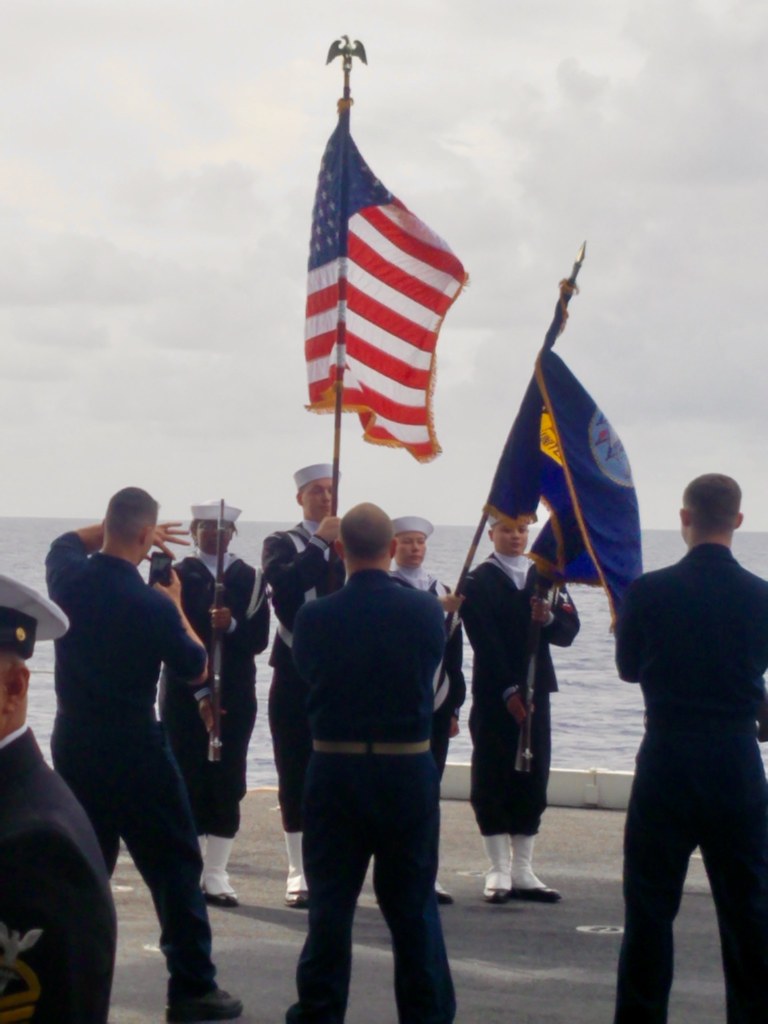The USS John C. Stennis had only been out to sea for a couple of days when we visited. Morale remained high with the crew so early into their voyage, with absolute professionalism in whatever jobs they performed. We watched everyday activities as they took place, the many parts that worked together keeping a warship in top condition.
Ultimately, everything supported flight. Yet thousands of the crew never actually touched any planes. I already described the massive efforts necessary to feed everyone as one example. Now I’d like to turn some attention to a few of the other important although maybe less visible jobs.
Fire Preparedness

Few things threaten ships more than fire. A lot can still burn even within a metal structure. Obviously the fire department can’t get to a ship hundreds of miles out to sea so it has to have its own robust firefighting capability onboard. Dedicated personnel trained continuously for this possibility, learning to get into their gear in a few seconds and memorizing the quickest routes to every obscure corner of the ship.
Fires actually do happen — often with electrical equipment — and the response needs to be rapid and overwhelming. Smoke also causes problems in confined corridors so venting has to happen, and they have equipment for that too.
Sailors and Jailers

The brig didn’t hold any prisoners during our tour so we got to check out the cells. I guess nobody had the chance to get into trouble so early into the deployment. Unfortunately, like any “city” of several thousand people, an aircraft carrier included a tiny percentage of miscreants at any given time, and a crew to oversee them. Oftentimes offenses involved kids barely out of high school going on shore leave in foreign ports. They might get a little out of control in ports with easy access to alcohol. Mess up badly enough and the Captain might send the offender to the brig, deep down on a lower deck.
The brig did offer one nice feature though; highly functioning air conditioning. The trade-off included confinement with nothing to look at except the walls. Prisoners couldn’t just sleep the day away either. They had to remain seated and they couldn’t lie down except at night. Until recently they could also be put on a bread and water diet in certain circumstances. I always thought of that as one of those old-time punishments that disappeared in the 1800’s. Actually it lasted well into the 21st Century in the U.S. Navy.
Public Affairs

An aircraft carrier like the Stennis contained a large enough crew to justify an entire public affairs department too. Unlike many groups, this one received continuous Internet connectivity to perform their duties, including the maintenance of the ship’s social media presence (e.g., a Twitter account).
People assigned to public affairs also included photographers and videographers who constantly roamed the ship in search of interesting activities to share with the outside world. Others operated an internal television station to entertain the crew. Additionally, these were the people who shepherded Distinguished Visitors such as ourselves through many hours of intensive touring.
Volunteers

By coincidence, we happened to be onboard when the crew performed a Burial at Sea for veterans who had passed away in the previous few months. Everyone supporting the effort volunteered for this, from the color guard, to those escorting the urns, to the sailor who played the bagpipes. It was quite moving and dignified. Out of respect I only took photographs after the ceremony concluded.
This didn’t take place every day. In fact, our public affairs handlers could only recall a handful of instances over the past couple of years. This particular burial offered a final resting place for more than forty veterans, including three from the Second World War. Each name was announced, along with hometown and years of service, before the urn was placed in a tube so it could slide gracefully into the ocean. Afterwards, family members received a package of information including the time, date and geographic coordinates of the committal.
Apparently a broad range of veterans could request a Burial at Sea. Although most cited Naval service, a few Army veterans also rounded out the total as did a couple of spouses of those who served.
Articles in the Aircraft Carrier Series:
- Getting to Norfolk
- All Aboard
- Air Power
- The Island
- Living Aboard
- Feeding Time
- Always Working
- Other Spaces and Places
See Also: The Complete Photo Album on Flickr

Leave a Reply